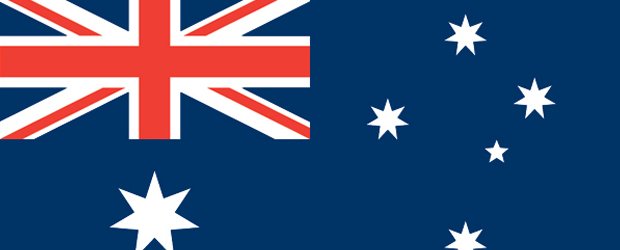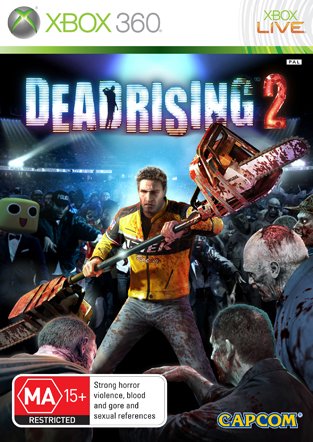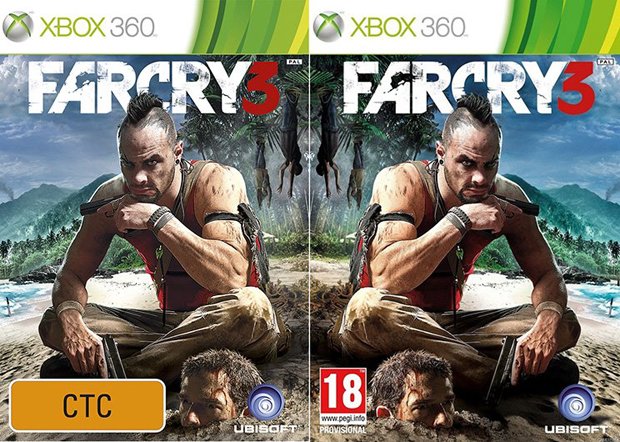An Introduction to Gaming in Australia
The world's "worst country" for gamers? Let's take a look.

Welcome to Australia. Enjoy our beaches and reefs, but watch out for the dropbears, the hoopsnakes, and the killer lamingtons. We’ve got blowflies the size of your fist, sports that reward you with a point if you miss the goal, and around 150 big things including, but not limited to, a beer can, a potato, and a dead fish.
We’re also a nation of gamers, and our numbers are growing every year. According to stats from Bond University in Queensland, in a survey conducted by the Interactive Games and Entertainment Association (IGEA), 92% of Australian households were found to own a device for playing videogames in 2012, up from 88% in 2008. Break those numbers down further and you’ll find a game console in 68% of Australian households, mobile phones in 43%, and handhelds in 13%. The average gamer is 32 years old, females account for 47% of the total gaming population, and 75% of gamers are aged over 18. Clearly, we like our GTA as much as our XXXX (it’s a brand of beer), but when it comes to how we game compared to the rest of the world, things are a little less straightforward.
GamesRadar posted a piece titled The Worst Countries to be a Gamer, and of the 25 countries and nations mentioned, Australia was deemed the overall winner. The reasons won’t surprise - a truncated classification system and inflated software prices are a double whammy of political and societal fists to the face of gamers, no matter where you’re from - and from the outside looking in, it’s hard not to imagine an oppressive regime that stamps out violent games and charges you twice as much for the privilege. But what is it really like? Forget the hyperbole, forget the outrage - let’s examine first-hand the experience of the average Australian gamer.
CLASSIFICATION
The obvious challenge is perhaps the most publicised: Australia’s classification system. It stretches to six categories for film - G, PG, M, MA15+, R18+ and X - but for videogames the system only goes as far as MA15+. This means that if a game submitted for classification is deemed to exceed that rating, it will be refused classification - the dreaded RC. With no videogame-friendly marking available to them, classification board members are left with no other choice but to assign it the RC verdict, essentially forbidding the game from legally entering the country.
What happens next depends on the game, the submitter, and seemingly, which direction the wind is blowing. Offending games are either edited to come in at the MA15+ level (The Witcher 2, Fallout 3, Dark Sector), or are barred from sale entirely (Mortal Kombat, Reservoir Dogs, Syndicate). Sometimes games are RC’d retroactively, receiving a retail release before being removed upon appeal (Marc Ecko’s Getting Up: Contents Under Pressure, Manhunt), and sometimes they’re RC’d and then put on sale after a classification revision (Aliens vs Predator, House of the Dead: Overkill - Extended Cut, FEAR 2: Project Origin). Then there are the games, such The Walking Dead, which are barred from sale on XBLA, yet freely available on Steam. Baffled? Get in line.
It’s an obfuscated - and seemingly arbitrary - series of decisions that count towards a game’s release in Australia, yet perhaps it’s also an overstated one. At the recent GameTech conference in Sydney, Jane Fitzgerald, Assistant Secretary at the Classification Operations Branch, revealed that of the 891 games classified in 2010-11, only two were refused classification: Mortal Kombat (which remains RC’d) and The Witcher 2 (which was edited and resubmitted.) And in 2011-12, out of 807 games, three were RC’d: Syndicate (still RC), Mortal Kombat: Game of the Year Edition (ditto), and House of the Dead Overkill: Extended Cut (appealed and passed under MA15+, no edit required). It’s such a small number as to be practically insignificant, and in terms of volume, hardly worth quantifying as a "drastically cut-down selection of games".
Sign up to the GamesRadar+ Newsletter
Weekly digests, tales from the communities you love, and more
So why a noise so loud for a number so small? Because it’s a constant issue. Each RC decision or Australia-specific edit receives an extraordinary amount of attention and media coverage; fresh reminders of a longstanding topic. Perhaps it’s coverage that’s disproportionate to the scale of the problem, but with Australia the only country in the developed world without an 18+ classification for games, it’s hardly insignificant. Go back to that earlier stats dump: 75% of Australian gamers are aged 18 years or older. That’s 75% of the game-playing population barred from experiencing the mature end of the gaming spectrum, yet free to experience similar in another medium - say, an R-rated movie. They’re allowed to watch Mr Blonde slice off an ear, but not allowed to play the game tie-in. And in terms of how games are classified, there’s no demonstrated consistency: what is permitted in one game is not necessarily permitted in another. The Darkness 2, for instance, is free to rip out hearts and slice bad guys down the middle under an MA15+ rating, but Mortal Kombat’s blood-letting was deemed too excessive. Precedence is not a factor when it comes to game classification in Australia - it’s purely on a case-by-case basis.
It’s a frustrating spectacle, compounded further by its impact on gaming culture and history. For the collector, our classification system creates a situation - a divide - where edits or concessions made to an Australian-specific version of a game distance it from the “real”, unedited version released elsewhere. Two resulting products, yet arguably only one conveys the developer’s vision - and the intended experience - intact. Look at the Australian edition of Left 4 Dead 2; one finds it hard to believe that its disappearing corpses, lack of blood, and absence of dismemberment goes anywhere near towards reflecting what Valve wanted to create in its zombie-shooter. And when it comes to true collectors, anything less than the pure experience is the “wrong” experience.
The ratings system alters how a game is perceived even from a purely cosmetic standpoint. Here’s a typical sample of Australian game boxart:

Look at how much cover real estate is taken up by the classification marking. This system, implemented in 2005, was designed to curb suggestions that the previous markings were too hard to see; they were getting lost in the cover art, and parents encountered difficulty in their efforts to take the classification advice. Today, they can’t help but stand out, attracting the eye as much as the art itself - and in fact, going some way towards changing it altogether:

The classification marking of Australia is such that the cover art for Far Cry 3 has to be mirrored in order to accommodate its size into an area where it would not obscure a vital element - in this instance, the head emerging from the sand. It’s yet another example of publishers bending over backwards for Australia’s approach to videogame classification; whether it is to the product’s benefit or detriment is up to the reader to decide.
Come January 1 2013, Australia will finally have an R18+ rating for games. With the revised system having passed the Senate in June, the country’s gamers can finally look forward to a system in step not only with that of movies, but in line with the rest of the developed world. Time will tell, however, if it benefits mature gamers, or isolates them further.



